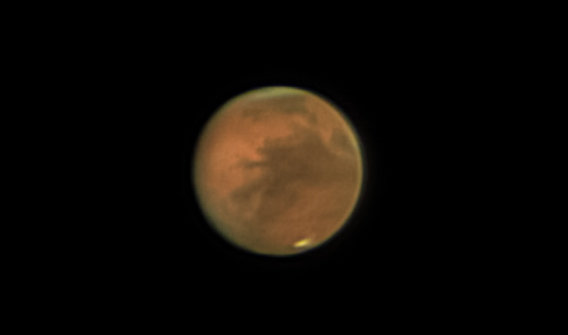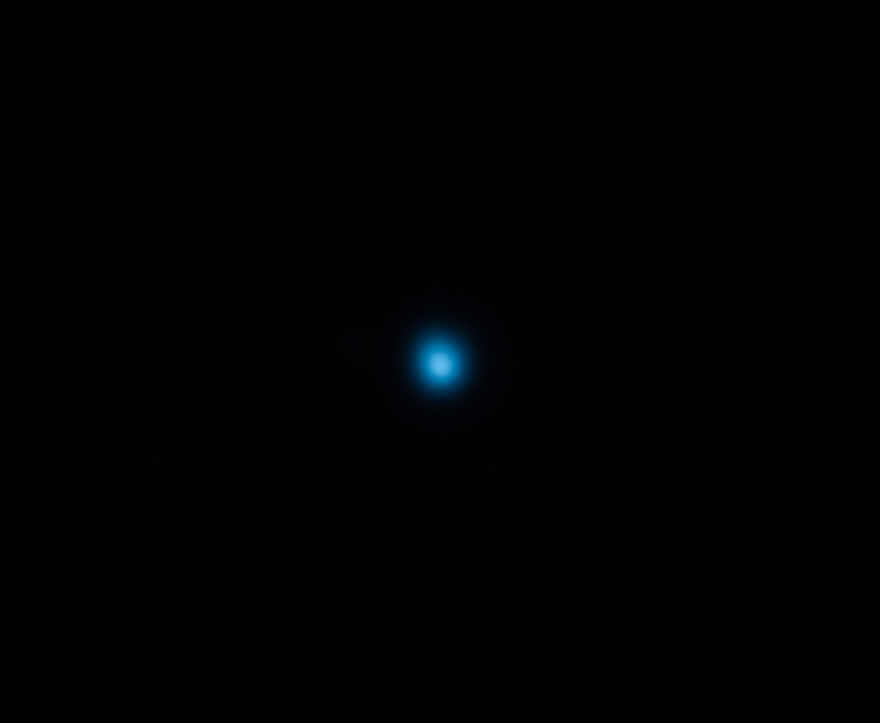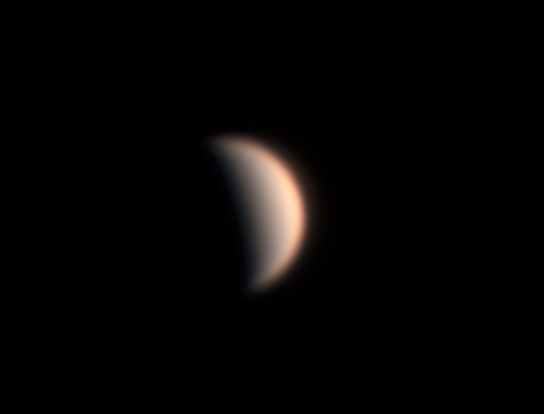I have been waiting for this planet very long. It doesn’t mean that Mars hasn’t been visible, it was, but not from my backyard. I live in central Europe, specifically on the 47 parallel. This means that all planets should be 43° above the horizon during the conjunction (when Sun, planet, and observed planet are in one line). Well, this would be true, if the Earth would be spinning perfectly perpendicular to the plane of the Solar System. In reality, the Earth has a tilt, which causes that some years are much better than the others. A better year for a certain planet means that the planet raises a lot above the horizon, a bad year means that it stays close to the horizon.
This year was one of the best years for the planet Mars. The next opportunity will occur in 15 years.
The picture is a stack of 750 best frames, each 7.3 ms long. The focal length of the Celestron C14 telescope was extended from 4000 mm to 6400 mm by the Siebert Barlow lens.

| Telescope: | Celestron EdgeHD C14 |
| Aperture: | 354 mm |
| Focal length: | 6400 mm |
| Mount | Gemini G53f |
| Autoguiding | - |
| Camera: | ZWO ASI228MC |
| Corrector: | Barlow 1.6 |
| Filters: | UV IR cut |
| Exposure: | 3000xRGB (25% used), 7.3 ms, Gain 219 |
| Date: | 2020-10-25 |


